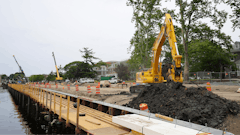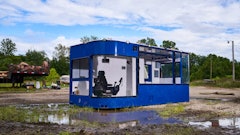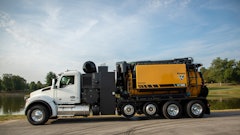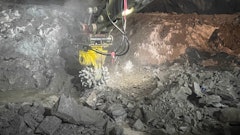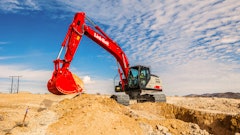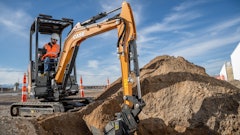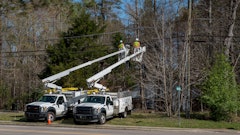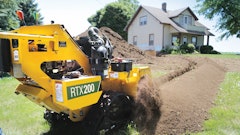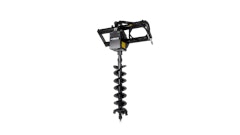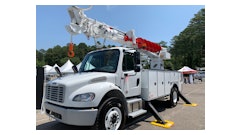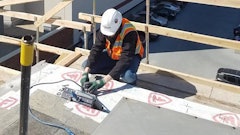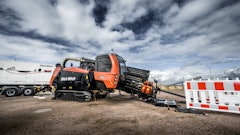
After repeated breakdowns and makeshift attempts to repair an aging sanitary pump station continued to fail, the city of Kitchener, Ontario, Canada, decided the time had come to decommission and remove the pump station and install a gravity flow sanitary sewer line.
The installation design plan called for the new sewer to be installed in two sections. The first, approximately 755 feet (230 m), involved a residential subdivision with an environmentally sensitive area and a creek crossing and was to be installed using horizontal directional drilling (HDD). The second 105-foot (32 m) section included a slight deflection from a proposed manhole at the downstream end to tie in to the existing sanitary sewer in a neighboring residential subdivision and was to be installed using open-cut methods.
When Jason Kottelenberg, contract manager with AVERTEX Utility Solutions Inc., based in Orangeville, Ontario, Canada, reviewed the tender and considered the soil conditions in the second section, he felt there would be challenges with excavating.
"The soil profile consisted of loose fill, sand and peat soils on top of hard clay till, and the water table was perched well above the proposed sewer line," Kottelenberg explained, "and would have been difficult to complete using open-cut. We viewed this as an opportunity to give the new AXIS boring system a try."
AXIS takes lead down the home stretch
After completing the first section bore using a Vermeer D100x120 Series II Navigator drill, the AVERTEX team was prepared to tackle the second and final shot using the AXIS guided boring system. A 10- by 15-foot (3 by 4.6 m) launch pit was excavated to position the components of the AXIS system for the home stretch.
With all the components securely in place, the laser was positioned at the 1 percent grade required to meet the final connection point and the camera positioned to align with the target guide. Here's how the system works:
- At the front of the drill head, only the cutter bit and center drive shaft rotate as the drill head and accompanying casing advance through the bore - the outer section remains stationary.
- If the laser dot is centered within the cross hairs of the target, the drill head is on course. Any necessary adjustments are made by the operator who monitors the images sent from the camera to the operator console.
- Spoil is extracted simultaneously with the assistance of a high-power vacuum and diverted to a vacuum tank - eliminating the need and expense of hauling spoil away from the site.
Upon completing the final 105-foot (32 m) bore, the AXIS system components were then removed from the pit and the sewer line pushed back through by hand and connected. No additional excavation was necessary at the connection manhole site.
"Outside of a pesky rock that was positioned dead center in the drill path, the AXIS bore was completed without a hitch," Kottelenberg says. "Fortunately the rock was located toward the back end of the bore. It took some repositioning to keep the shot on-line and on-grade, but we hit our target dead center."
The AXIS Advantage
As more cities and municipalities commit increased resources to repair and upgrade outdated and crumbling infrastructures, the number of water and sewer projects is expected to increase. Many of these projects will be required to be placed precisely on-grade. While some of the current trenchless methods have the ability to achieve the accuracy these projects may mandate, they lack the productivity needed to compete with open-cut methods.
The AXIS guided boring system is designed to install 10- to 14-inch (25.4 to 35.6 cm) pipe at lengths up to 350 feet (106.7 m), and can maintain grades of less than 0.5 percent. Basic components of the system include power pack, rack, vacuum pump and storage tank. No only is the system capable of maintaining a strict tolerance of accuracy, it is also flexible. Various setup configurations can be used to adjust the machine's footprint based on jobsite and transport logistics and the system is capable of installing a variety of pipe material.
"We view adding the AXIS system to our fleet as an investment in helping grow our business," Kottelenberg said. "It's another tool in the cabinet that gives us a competitive edge by allowing us to compete for more jobs."





